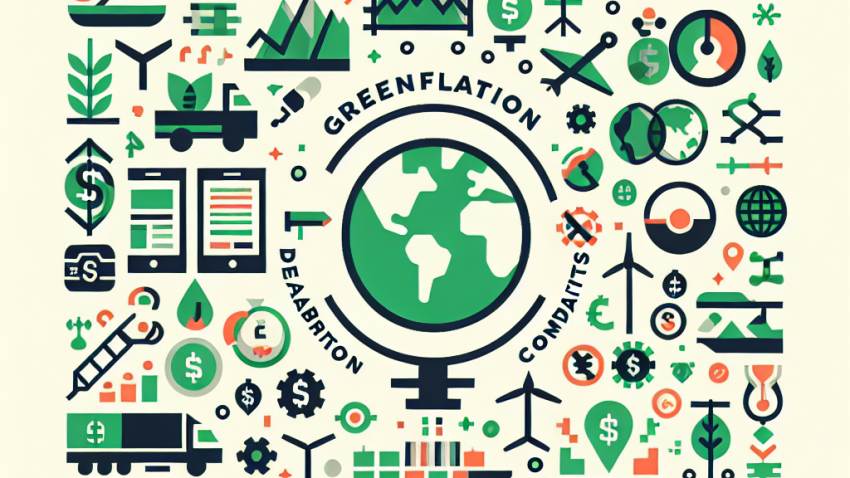
Greenflation: Decarbonisation and the Price of Commodities
Global Economic Cycles: Why Booms Always Lead to Busts — and What History Teaches Us
Ah, the sweet smell of economic expansion. Stock markets are jubilant, central bankers toast soft landings, and politicians parade balanced budgets. Yet, as any seasoned scholar of the dismal science will tell you: what goes up must, inevitably, come down. In this exploration, we shall gallop across the undulating plains of economic history, from Dutch tulip bulbs to dot-coms, dissecting why booms predictably precede busts — and, crucially, what investors and policymakers should learn from this perennial paradox.
So, tighten your intellectual seatbelts and fill up your thermos with bitter coffee. Dr. Alistair P. Whitmore — specialist in global macroeconomic pontification and connoisseur of highbrow skepticism — is your guide to understanding the mechanics, psychology, and tragic comedy of the economic cycle.
The Anatomy of an Economic Cycle
From Recovery to Recession: The Four Phases
Contrary to popular belief (and Wall Street newsletters), economic cycles are not aberrations. They are not bugs in the system. They are features — deeply rooted in human behavior, institutional frameworks, and monetary rhythms. Broadly, an economic cycle comprises four interlinked phases:
- Expansion: Strong GDP growth, job creation, rising consumer confidence, and increasing investment.
- Peak: Inflation creeps up, asset prices soar, labor markets tighten — euphoria reigns.
- Contraction/Recession: Growth slows, unemployment rises, credit tightens, and markets panic.
- Trough: The economy bottoms out, setting the stage for the next expansion.
Each cycle is unique in its surface features — sectoral causes, geopolitical triggers, and regulatory backdrops — but the underlying mechanism is woven from the same tapestry of optimism, leverage, and eventual overreach.
Why Booms Give Birth to Their Own Undoing
Think of each boom as Icarus with a balance sheet. As asset prices rise, credit flows freely, and central banks often lag behind the inflationary curve. Households borrow, companies expand aggressively, and speculative behavior becomes righteous dogma. Eventually, either markets correct, or policymakers pull the brakes — and the descent begins.
This is not merely metaphor. Consider Minsky’s Financial Instability Hypothesis: stability breeds instability. After prolonged periods of calm, market actors shift from cautious “hedge finance” to speculative lending — and then to outright Ponzi schemes. History is littered with the wreckage of Minsky Moments.
Historical Case Studies: Booms and Their Brutal Endings
The South Sea Bubble – 1720
Ah, Britain in the early 18th century. The wigs were tall, expectations even taller. The South Sea Company promised untold riches from trade with Spanish South America. Investors mortgaged homes, pawnbrokers issued credit, and even Sir Isaac Newton got caught up. When confidence collapsed, portfolios crumbled and Parliament panicked. Newton later lamented: “I can calculate the motions of the heavenly bodies, but not the madness of men.”
The Great Depression – 1929
The Roaring ’20s offered the illusion of perpetual prosperity. Margin debt exploded, and Wall Street became a casino with tuxedos. October 1929 brought a thunderous crash, leading to a worldwide spiral of bank failures, mass unemployment, and economic contraction that lasted a decade. It took the advent of Keynesian thought and World War II-scale public spending to revive global demand.
The 2008 Global Financial Crisis
Mortgage-backed securities, credit default swaps, and the illusion that housing prices could only rise — it all seemed so brilliant. Until it wasn’t. Lehman Brothers collapsed, credit markets froze, and the global economy teetered on the abyss. Only after coordinated action by central banks (and more than a little Quantitative Easing) did equilibrium return.
The Role of Central Banks: Arsonists and Firefighters
Central banks — particularly the Federal Reserve — walk a tightrope between stimulating growth and containing inflation. Too early with the rate hikes, and you choke the recovery; too late, and you fuel speculative excess.
During expansions, central banks flood the system with liquidity and keep borrowing costs low. Unfortunately, this also incentivizes reckless behavior. During contractions, they become lenders of last resort, slashing rates and launching asset purchase programs. The paradox? Their very interventions during crises often sow the seeds of the next boom.
Investor Behavior: The Prisoner of Recency Bias
The psychology behind economic cycles is deliciously predictable. Investors consistently extrapolate the recent past into the future — a cognitive laziness referred to as recency bias. If the market has gone up for five years, surely it will continue — right?
But irrational exuberance is rarely called irrational when you’re making money. Only in retrospect does a mania become obvious. To paraphrase Warren Buffett: “Only when the tide goes out do you discover who’s been swimming naked.”
Can Busts Ever Be Avoided?
The Elusive Goal of Soft Landings
Every central banker dreams of orchestrating the mythical “soft landing” — slowing inflation without triggering a recession. It’s the economic equivalent of threading a needle while riding a unicycle through a hailstorm.
It’s possible, yes, but rare. More often, the system overshoots — tightening too far, or not far enough — and the cycle continues its eternal swing.
Reforms and Regulations
Policymakers have implemented tools to stabilize markets: capital requirements, macroprudential regulations, stress testing, and more. But markets evolve faster than regulations. Shadow banking, crypto assets, and decentralized finance already threaten to outpace current frameworks.
If history is any guide — and it usually is — the next crisis will emerge from where we least expect it.
Lessons For Investors and Policymakers
What Can We Learn From All This?
- Cycles are natural — not avoidable, but manageable
- Excess always precedes collapse, whether it’s tech stocks, real estate, or tulips
- Investor psychology plays a critical role: fear and greed drive markets more than fundamentals
- Monetary policy is a blunt tool — effective, but often mistimed
Practical Considerations
- Diversify across asset classes and geographies
- Reduce leverage — busts punish debt-fueled speculation
- Avoid herd behavior. When everyone’s bullish, be cautious
- Maintain liquidity for downturns. Cash is underrated
Final Thoughts from Dr. Whitmore
The economic cycle is not a bug in capitalism; it is capitalism. The very risk-taking that fuels innovation and growth also invites periodic retreats. As such, the answer is not to wish for a frictionless future but to prepare — prudently, pragmatically, and without hubris.
So, the next time you hear someone exclaim, “This time it’s different,” lean back, sip your tea, and remember: history may not repeat, but it does, with gallows humor, tend to rhyme.
For more macroeconomic insights and updates from the desk of Dr. Alistair P. Whitmore, browse our About Us page or get in touch via our Contact page.

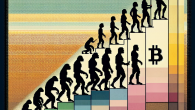

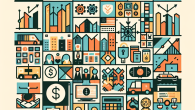


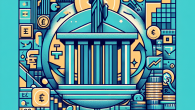

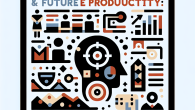
Leave a Reply